Text
Be Ready for the E-Future
For the last couple of years we are witnessing an explosion in E-bike development. Mass production has provided many cheap and readily available E-bike components.
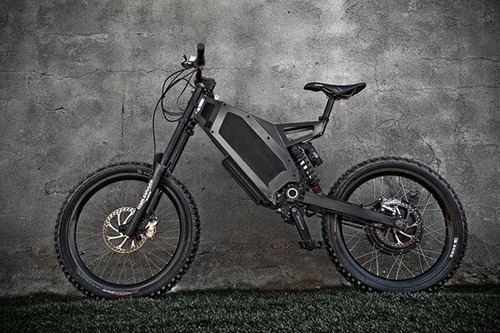
(source: Stealth Electric Bikes)
Small, light, and powerful LiPo batteries, along with rising fuel costs created the perfect environment for some cool E-bikes to potentially explode on European and Asian scene. Read our list of electric bikes that could absolutly change the game in the future.
1. Phasor Cycles
This is a new company, but their first mass produced electric bike component is already available to the public, and its a beauty. Currently this bike is offered as a “frame only” for DIY builders, but they have plans to release a complete bike in the near future. Phasor Cycles is a new electric vehicle company, essentially a DIY electric bike builders dream, but it could be a nightmare for a novice who is just getting into electric bikes and wants something to ride ASAP.

(source: Phasor Cycles)
2. ŠKODA Pedelec
New ŠKODA Green E Line e-bike expands existing ŠKODA bicycle collection. “Pedelec” combines muscle and engine power, up to 105 km range. Wide choice of ŠKODA cycles for any age and any purpose. Once the lithium-ion battery’s capacity has been fully used, it can be recharged to max capacity in four hours. The motor from BionX brand is integrated into the rear axle and puts out 250 watt. It is powered by a frame attached battery with a capacity of 423 Wh and a weight of just 2.6 kg. The entire bike weighs a mere 21.7 kg. ŠKODA created its first e-bike in cooperation with KTM company.

(source: Škoda)
3. nCycle
nCycle is the brainchild of a NYC-based design and development company Behance. The company decided to rethink ebikes by “problem solving from ground up and integrating it into the aesthetics.” And then nCycle was born. Behance claims that the design of nCycle addresses typical ebike issues of expense, inflexibility, weight, and general hideousness. While the pictures look awfully chic, mum’s the word from Behance on the cost or poundage of nCycle. We all know that great design usually comes at a premium bicycles, so don’t hold out for a bargain-basement price when you start shopping for your very own nCycle.
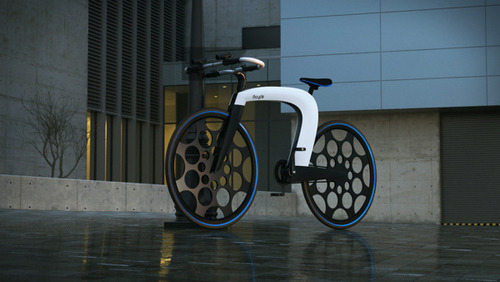
(source: nCycle)
4. Monocycle
In cooperation with the DING3000 design studio, BASF company has developed a velocipede embodying the current state of the art technology. In doing so, the innovative one-off quotes the geometry and mechanics of the first pedal cycle. The crank directly drives the front wheel (39") which, in order to improve the transmission ratio, is much larger than the rear wheel (24"). The chain, sprockets and coaster brake are entirely omitted. Even so, the modern-day velocipede is much more than an appreciative allusion to bygone days. Technically it is ahead of its time. For the fully functional and ready-to-ride e-bike features such spectacular details as thin optical waveguides inlaid in the forks for the lights, softly sprung and at the same maintenance-free tires, and a detachable seat with an integrated battery. Overall, this modern e-bike makes use of 24 innovative BASF materials – materials that are sure to come to the fore as electromobility advances.

(source: BASF)
5. Bomber
The Stealth Electric Bikes Bomber, shown above, fuses a 4500 watt motor to a drivetrain that is shared by standard bike pedals. With foot power and the electric assist, the Stealth Bomber can climb to speeds of up to 50mph on the open road, a near peak for eBike transportation. The Bomber connects to a standard 110V (or 220V) outlet in the US or Europe and will be fully charged in just two hours. On longer stretches, the rider can rely on regenerative braking technology to squeeze a little more juice out of the Stealth electronic assist.

(source: Stealth Electronic Bikes)
6. Copenhagen Wheel
While it may be the world’s most numerous form of transportation, the bicycle really hasn’t changed much in the last hundred years. Gears, breaking and frame designs have all stayed more-or-less the same, albeit with subtle material upgrades. MIT hopes to change the way the bicycle works with the Copenhagen Wheel: a power and information assist for the urban cyclist. The Copenhagen Wheel provides both and electric power assist and ride diagnostics for its rider. It uses a regenerative breaking system to store the kinetic energy created when braking– then release it as a power boost as needed. The diagnostics side of the Copenhagen Wheel will collect information about the cyclist’s route, the distance traveled and various health data about the rider. This will be stored and controlled via smartphone, then shared with the world through social networking.

(source: MIT)
7. The Bridgestone Angelino Petite eBike
The Bridgestone Angelino Petite eBike uses a pedal assist to help one cyclist support a small family on two wheels. While it may be “petite” by name, this eBike may be the largest and heaviest ever created. It features a central seat for the cyclist and a pair of child seats, one in the rear, one over the front handlebars. Its tough frame can handle up to 220 pounds total among the three riders, and the battery has enough juice to push the family for 37 pedal-assisted miles per charge.
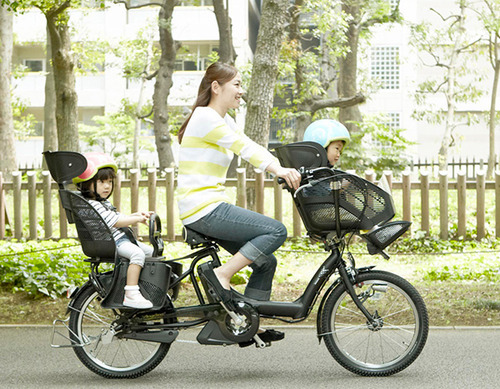
(source: Bridgestone)
8. The Carbon Fiber Electric Tricycle
The Carbon Fiber Electric Tricycle by Simon Schmitz and collaborators is powered by nothing more than a 14V Bosch electric screwdriver. While that might be low tech in theory, it’s ingenious in execution. When Schmitz powers up his Bosch screwdriver, this carbon fiber tricycle climbs to 19 mph for nearly 4 miles on a single charge. Sure, that might not complete the average commute, but this vehicle isn’t built for travel, it’s built for racing.

(source: Simon Schmitz)
4 notes
·
View notes
Text
Cinelli: The Art and Design of the Bicycle
There are names that become synonymous with entire areas of activity. Pele means soccer. Gretzky is a general synonym for ice hockey. And Cino Cinelli stands for cycling.

Bike porn. Nice and rare Cinelli Super Corsa bicycle from 80s. The frame and fork are made of very light and durable Columbus steel tubes. (source: CINELLI: THE ART AND DESIGN OF THE BICYCLE)
An outstanding cyclist, an ingenious designer, and an innovator helped to move cycling to the threshold of the 21st century. The Cinelli brand has been producing supreme quality sports bicycles for decades, even though – or is it because? – the Milano-based company put out just several thousand bicycles per year until the 1970s.

Cinelli bicycles are designed with Italian tradition for the new generation of cyclists who love Columbus tubing, carbon construction, or just fun road bikes. (source: www.wingedstore.com)
Cinelli’s cycling career peaked during the World War II. After the war, he quit racing and started producing and designing bicycles as well as innovating bicycle components.
Today, some of his patents are considered classic. Cinelli believed that frames needed to be stiffer and that the geometry was too relaxed on most of the models of the era. He designed a fork crown with sloping shoulders and internal lugs. This allowed for shorter blades and resulted in a fork that was stiffer. Cinelli also redesigned the seat collar, placing the seatstays behind the lug rather than alongside it.

Who said Cinelli bicycles are only for men? Cinelli is lifestyle at first. (source: www.wingedstore.com)
The innovations that he brought to cycling are numerous. They include the first aluminium handlebars accepted by the pros, the first plastic saddle, the Unicantor, designed in 1962, which provided a template for most modern saddles, and the first clipless pedal known as the M71 released in 1971.

Cinelli has led the evolution of professional cycling and defined the ideal of the classic bicycle. (source: CINELLI: THE ART AND DESIGN OF THE BICYCLE)
Cinelli also put his trademark touch on hub design with the introduction of the Bivalent q/r hubs. This design left the freewheel in the rear of the frame so the wheel could be used in the front or rear. The idea was ahead of its time and the price was twice that of a Campagnolo hub.
He is also the designer behind the Laser bicycle, one of the first aero “funny” bikes. This model was instrumental in winning many national and global trophies.

With contributions by legendary riders such as Felice Gimondi and Gilberto Simoni, and by collaborators, from artists like Mike Giant to designers such as San Francisco's graphic impresario Benny Gold, Cinelli is the definitive look at how beauty and technology can meet in this simplest form of design. (source: CINELLI: THE ART AND DESIGN OF THE BICYCLE)
Ole Ritter used a Cinelli to set the one-hour record in 1968. This model used longer cranks and Campagnolo hubs that were 2 cm narrower than conventional hubs. It also ran on special tubulars made exclusively for this record attempt. In addition, the bike featured a special fork with wing-shaped blades for lower wind resistance.
Cinelli’s modifications and improvements won him the admiration and love of generations of racers and design connoisseurs despite his pricing which was never in the low end.

Take a sit and breathe deeply! Awesome connection of natural beauty with top design. (source: www.wingedstore.com)
Cinelli retired in 1978 but his company carries on and its name commands respect across the cycling community all over the world. Speaking of which, a piece of very good news has been recently received. A book describing the world of the “Cinelli cult” has been finally published. Titled The Art and Design of the Bicycle, the book offers to take you on a trip to the magical world of Cino Cinelli.

Cover book Cinelli: The art and design of the bicycle. A beautiful book celebrating the exploits of an international brand. (source: CINELLI: THE ART AND DESIGN OF THE BICYCLE)
2 notes
·
View notes
Text
Two Cinema Nomads on the Road with Cycle Rickshaw
Travelling across India and Pakistan is strenuous even for regular tourists. Deciding to take a nomad cinema along for the ride, not in a car but on a pedal tricycle, grants you two things; 1) you won’t get bored; and 2) you will not rest. Jan Turnovec and Ondrej Kaspar could tell you all about it.

They have been travelling from the Pakistan Peshawar to the Indian Calcutta on a bike and with a freight rickshaw for three months now down the Grand Trunk Road - the ancient trade route connecting Kabul and Calcutta. Whenever possible, they unpack their nomad cinema for the i screenings of fairytales for little kids and Bollywood hits or action blockbusters for the adults.

The dirt roads, the horns of the overtaking trucks, the fog, the cold, the rain. Buttocks stuck to the seats, the speed limited by the state of the road and the remaining strength. The attention of the natives wherever they go, facing the countless technical problems with their bikes or their projectors. This expedition truly isn’t a vacation, it is rather an intense introduction into the mysterious Asian world.

After three months they crossed from Pakistan to India, after hundreds of kilometers in their bicycle saddles, dozens of screenings and thousands of more or less happy spectators. The initial idea was, however, a little more romantic but “not even the cinema is a big attraction for slum children living in huts made of plastic bags equipped with massive satellites and hundreds of channels, and new iPhones ringing in their pockets.”
And so there is no other choice but to adapt to the local conditions, choose a good screening spot and a good film, and eventually open one’s heart to the gods.
“We pedal, sweat blood or on the contrary, freeze our fingers as the temperature only hits 8°C, break chains, curse the Pakistani bicycles… At around four in the afternoon we start searching for tents, huts or even flat spots where kids play cricket. Ideally with a large wall. Even though the children here are nice indeed, they don’t hesitate to pick our bikes apart, as we have encountered multiple times before. The place also has to be reachable on our tricycle but we have developed an eye for that already and see exactly how one spot is flawed, while the other one is perfect. Still, the verdict is in the hands of God,” report both impresarios.

After 2500km of cycling, they reached their original final destination in Puri in January, looking worse for wear. “Still better to cycle through India, constantly answer the question “which country?” every day than to be stuck in an open space somewhere in Central Europe,” they both agree.

Only thing left in front of them is the crossing to Varanesi and then the planned journey home. Understandably, both nomads refuse to give up their Sohrab rickshaw tricycle. That’s why they are currently organising a fundraising for the transport to Europe. For more information about the fundraising, please visit www.roadcinema.com.
2 notes
·
View notes
Text
Be Prepared for Everything With a Swiss Pocket Knife
Are you a spontaneous person, who often finds yourself doing the unexpected? Do you need a handy tool ready for any situation – whether it's an improvised celebration or first aid – and small enough to carry in your pocket?

Let us suggest the ŠKODA Rapid pocketknife, available for sale in the eShops in Germany and Belgium (under Lifestyle - Diversen / Divers).
Made by the legendary Swiss knife manufacturer Victorinox, the ŠKODA Rapid pocketknife is both practical and stylish. In addition to a razor sharp blade (with a stylish laser-etched Rapid logo), the pocketknife comes with tweezers, corkscrew, screwdriver, and a bottle opener. All the tools are made with Victorinox’s famous attention to detail and quality.
Whether it's for a sudden emergency or an unplanned roadside picnic, the ŠKODA Rapid pocketknife will ensure that you have everything you need to get the job done.
Now you can open that beer AND tighten that saddle screw without having to carry two bulky sets of tools!
Interested?
Australia: Find a dealer
Czech Republic: Browse for cycling accessories in the eShop / Find a dealer
Benelux: Find a dealer / Browse for cycling accessories in the eShop
France: Find a dealer
Germany: Find a dealer / Browse for cycling accessories in the eShop
Italy: Find a dealer / Browse for cycling accessories in the eShop
Poland: Find a dealer
Spain: Find a dealer
UK: Find a dealer
1 note
·
View note
Text
Bajkazyl - The Bike Asylum in Prague
How many bike stores are also a bar, a cycling collective, and one of the hippest concert venues in their city?
Let's take a look at Prague's Bajkazyl.

Like in any good pub a trophy hangs above the fireplace. Instead of a deer head, Bajkazyl shows off what it knows best.
From the Beginning
Bajkazyl (website in Czech only) was formed by Martin Kontra, a well-known figure in Prague's bustling cultural underground. A respected journalist, cycling advocate, sometime musician, and well-known cultural critic, it is impossible to find some area of the Prague cultural circle untouched by Kontra's work.
For nearly 3 decades now, Kontra has been putting his critical eye to use as an editor and contributor at Respekt, the Czech weekly magazine where he has worked since 1994. Although Kontra was (and still is) originally a journalist by trade, he made the leap to bike shop owner in 2010.
But Kontra's experiences with bikes date back to his student days. As a struggling young reporter, Kontra often used bikes to get around the city cheaply and easily. Since he was living in the outskirts of the city to save money, biking was his connection to the city's center, where Prague's cultural life dwells.
Time spent abroad in Berlin awakened Kontra to the possibilities of cycling culture. While he and his generation pedaled through Prague mostly out of necessity, he saw cyclists in Berlin choosing to cycle and, more over, incorporating it into their daily lives and identities in a way that was utterly new to him.
But What is Bajkazyl?
Bajkazyl is more than just an underground neighborhood phenomenon in Prague. It is a country-wide happening, with four different locations (three in Prague itself and one in the city of Olomouc in the south-east of the country).
Bajkazyl is not a bike shop. But what exactly it is, however, remains hard to define. You can repair your bike there, but it's not a repair shop. Despite the fact you can buy well-designed cycle accessories there (or even custom bikes on occasion), it's certainly not a bike shop. And despite its excellent beer on tap, well, it's not a bar either.

One of Bajkazyl's three locations in Prague. This one in Prague 3 is located on the bike trails to Radotín for easy access.
"From the beginning, we established [Bajkazyl] as a community space for people, who love to ride around the city and who cannot find exactly what they're looking for in 'classical' bike shops," Kontra declared. He emphatically believes that like cyclists themselves are complex and varied. Bajkazyl is designed to reflect just that fact.
Each of Bajkazyl location has its own vibe and style, though some locations (such as the one on the Rašín Embankment, located on the Vltava river in Prague) have seasonal closings or variable schedules. However, Bajkazyl's Prague 3 location, in the middle of the edgy Žižkov neighborhood, is a constant refuge all year long. On weekend afternoons, young parents stop in with their children to take a break or grab a bite to eat. During the weekdays, students and cycling enthusiasts sit with glasses of fresh Czech beer and take a break from a day in the hectic life of the Czech Republic's largest city.
Something for the Whole Community
"From the beginning we thought of the broader point. And so, from the start Bajkazyl clearly had to be a café and have cultural dimension," recalled Kontra in an interview this year.
More than just a bar or a bikeshop, Bajkazyl is a presence in biking and art communities throughout the Czech Republic. Bajkazyl's Prague branches regularly help organize events, which bring together the music and cycling scenes. Bajkazyl also routinely supports other home-grown and local businesses, ranging from the makers of cycling accessories to pop-up restaurants.
Bajkazyl's Olomouc branch is taking this one step further: in 2012 they partnered with local atelier and cycle designer Petr Wasniowski to include Wasniowski's Pietro cycles at their establishment. The co-operation helps ensure that small designers like Wasniowski, are able to show their wares and that links are forged between the cycling businesses and a community that supports them.
Bigger Than Your Average Bike Store
The end product is something bigger, more alive and welcoming than your average bike store. Bajkazyl (a combination of "bike" and "asylum" in Czech) functions not just as a place to fix or rent a bike, but one where you can grab a beer and hear a new young band as well. It is a community space, where people hang out on a Thursday evening, meeting up with friends. It is a uniquely Czech phenomenon – not as young and painfully fashionable as cycling hangouts in cities like Berlin or London, Bajkazyl draws young and old, hipster and businessman alike.

Some of the bike boutique accessories in the Žižkov store of Bajkazyl.
And unlike the snobbery and elitism fostered by old-school bike shops, which tend to be dominated by the young and the cool, everyone at Bajkazyl is refreshingly equal. Cool or square, young or old, fixie or mountain bike – none of that matters. It's the community that matters.
Multiple Locations, Different Feelings
In each of Bajkazyl's locations, customers can rent cycles by the hour or day, fix their bikes themselves using the self-service station and tools, or grab a beer. For those riders who have no mechanical skill, each Bajkazyl also offers a repair service (for more money, of course).
Each of these locations has its own feel and quirks, though the basic services are the same. In Smíchov, an industrial neighborhood on Prague's southwest side, Bajkazyl can be found right next to the Meetfactory, a cutting edge concert venue and art space located in a former meat-packing plant. In the up-and-coming neighborhood of Žižkov, the Bajkazyl location has more of a Berlin vibe, complete with a bike kitchen, non-smoking lounge, and full bar.
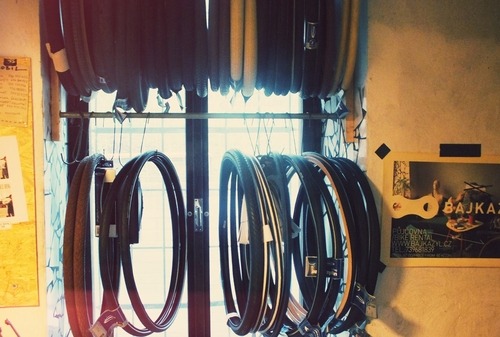
Every inch of the store is packed. Bike tires hang above board games and couches.
Bikes On the River
However, perhaps the most well-known Bajkazyl location is also the strangest. Located on the shores of the Vltava river as it winds through the city of Prague, the Rašín Embankment is a mass of cobblestones and floating barges. In the summers, hordes of Prague residents flock to the embankment's cobblestone-lined shores of the Vltava River seeking relief from the heat.
Tucked in among the tacky floating bars and the stained stone arches of the embankment is perhaps Bajkazyl's most famous location, a humble little beer garden which features a full service bar, live music from Prague's underground, and a rotating variety of food vendors.
"I can't imagine anywhere else I'd rather be on a good summer night rather than Bajkazyl," said Jiří Brozek, a student at Charles University. Like many other students, Brozek uses his cycle to get around the city, and is passionately devoted to cycling culture.
In the summer time, Brozek's friends and classmates will line the embankment, sipping Czech beer and listening to the evening's live entertainment. It is one of the premier meet-up spots in the city, where Praguers go to find or make friends.

Custom frames for sale, hanging under the ceiling in Bajkazyl, Prague 3.
Cycle Saunas?
"Punk with a bourgeois paintjob," is how one cycling magazine, Urban Velo, describes Kontra's approach to the sport, and perhaps nothing can be truer. At his heart, he is a non-conformist and an idealist, but he retains the middle-class values of comfort as well as an appreciation for well-crafted design.
It is this side which often comes to the front in Bajkazyl, which is concerned not only with riding but also with relaxing in style. However, sometimes Bajkazyl even gets in on the crazier, more conceptual side of cycling. In addition to its normal rental offerings, Bajkazyl Meetfactory offers a cyklosauna for rent.
The cyklosauna (cycle-sauna) is just like its name implies: a sauna which is attached to a bicycle for easy transportation and portability. It can seat 6 people, not including the rider/generator of course. Bajkazyl will even throw in a discount, if you supply your own wood for the fire, of course.
Customers who are feeling adventurous in the winter can rent the cycle sauna to park somewhere in the city and enjoy the heat and warmth even in the long dark nights of the Czech winter.

Sometimes movies are shown. The projector hangs by the racing tires, next to the custom frames.
Passionate and Opinionated
Perhaps because of his journalistic training, Kontra is no stranger to opinions and letting everyone know his own feelings on the matter of cycling. In particular, Kontra is not the biggest fan of mountain biking, though he admits they have their uses in a hilly city like Prague. "A person should go to the forest on his or her feet," Kontra said. "I do not find single-tracks or descents fascinating at all."
However, even the staunchest skeptic of mountain biking finds a place for the sport in the Czech Republic's booming cycling renaissance. And more importantly, with Bajkazyl, Kontra can continue his goal of introducing more and more Czechs to the beauties of cycling.
"Prague is not Berlin, and will never be," said Kontra. Fewer people ride here than in Berlin or Copenhagen, and Prague’s aggressive drivers and more aggressive politicians do much to scare would-be cyclists off the road. "But most don't know that Prague has beautiful scenery, for instance, the bicycle path around Bajkazyl in Žižkov," Kontra continued.
For Czech cyclists and cycling advocates in this legendary city, it seems like the key to helping this cycling community expand is to show the strengths of not just the cycling community, but of beauty of Prague.
Some day, Prague just may be the cycling capital of Central Europe. And when it is, you can thank Martin Kontra.
More Bike Shops:
Lie Back and Bike Berlin
All Good Bikes Go to Heaven, Pittsburgh
Hot Dogs and Handlebars - Biking in Chicago
2 notes
·
View notes
Text
Check Yourself Before You Wreck Yourself
Cycling is a beautiful sport. You can hop on a bike and quickly escape from the hustle and bustle of city life into the nature – all while giving your body some exercise. But cycling also has its risks – wounds and abrasions from crashes or inflammations caused by overuse.
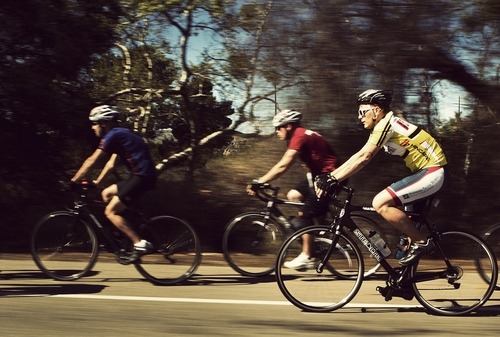
Let's have a look on the most common cycling injuries and on the ways how to avoid them. From top to bottom, we've got you covered!
Protect Yourself!
Scientific studies have shown that cycling is one of the most dangerous sports in terms of overall amount of injuries sustained.
Thousands of cyclists visit emergency rooms every year as a result of crashes. Hazardous riding styles, heavy traffic, or bad road conditions can cause not only bad abrasions and lacerations, but also much more severe problems like traumatic brain injuries. Whether the crash is from an accident, or just a tumble from an ice patch, head injuries are potentially the most dangerous injuries a cyclist can suffer.
The risks of concussion or even lethal brain damage can be hugely reduced by wearing a helmet. Helmets help absorb the force of an impact, which helps protect the skull itself.
Jaroslav Kulhavý, an Olympic winner in cross-country/mountain biking, was certainly glad he was wearing his helmet when a car struck him in 2011. He ended up with broken nose, slashed chin, and a few missing teeth. However, thanks to his helmet's protection, his skull (and most importantly, his brain) was unhurt.
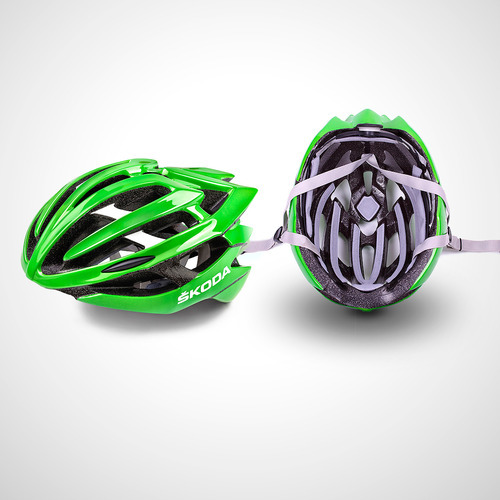
There are many helmets on the market – learn more about ŠKODA's helmets here.
Even the Pros Protect Themselves
Once upon a time, pros could decide whether or not to wear helmets. Not anymore.
Since 2003, professional road cyclists are required to use similar protective gear during races after Kazakh rider Andrey Kivilev died after a crash during a Paris–Nice race that year.
"I don't know a single professional who would not wear a helmet nowadays. Even those, who used to race during the time when using helmets was not mandatory, don't go for a ride without it. What the helmet protects is way too precious for such a risk," said Viktor Zapletal, coach of Jaroslav Kulhavý and Paralympic winner Jiří Ježek.
Give Me a Break
There are probably only very few professional cyclists who never had to take a break because of a broken clavicle. It is, according to some studies, the most frequently broken bone in the human body.
And the breaks can sometime be really nasty: the great time trialist Fabian Cancellara had to undergo two surgeries to repair his collar bone, which had snapped into four pieces after a collision. You don't even have to ride fast for this bone to break, it's the impact of your body hitting the ground with arms extended to brace during a fall.
To protect yourself you can try to follow this advice: keep your hands on the handlebars as long as possible while falling down and let whole your body absorb the shock of the tumble instead of bracing with your arms.
"Well, this recommendation sounds great, but try to think about it in a split second while falling down," Viktor Zapletal said. "A fall is usually unpredictable and a landing is an instinctive matter. The risk of such an injury decreases with skillfulness and experience in handling the bike."

A broken clavicle, fixed internally with plate and screws. (Photo: Lance Fisher)
Fractured Scaphoid (Wristbone)
The Czech professional road racer Roman Kreuziger fell multiple times during the 2011 Tour de France. His wrist hurt like hell, but the x-rays didn't show any fracture, so he finished the three-week long race. It was only after he got back home that doctors found out that his scaphoid was microfractured in two spots. He had to wear a huge cast for six weeks to let this little bone on the thumb side of his left wrist to heal.
It's easy to confuse this fracture with a sprained wrist, but if you fall down, your wrist gets swollen and it hurts when you put pressure on your thumb, it's time to go see a doctor. This fracture needs to be treated to avoid death of the bone or calcium changes in the bone which can lead to arthritis.
You've Got that Tingling Feeling
If you hands go numb while riding a bike, you need to check the position of your palms on the handlebars. If your wrists drop under the handlebars, the pressure on your palms can cause temporary damage to the ulnar nerve. This is called "handlebar palsy".
Fortunately, it's easy to fix – stretch your wrists before you go for a ride, keep your elbows slightly bent, and change the position of your hands while cruising around. In a few weeks, you should be back to normal.
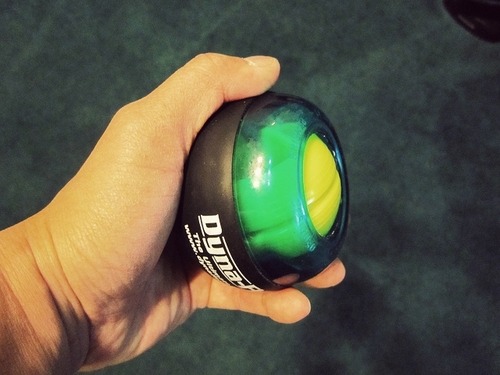
One way to stretch an exercise your wrist. (Photo: Rukia13)
Saddle Sores
This very common and intimate problem afflicts professionals as well as cycling enthusiasts. We've covered this topic in a separate article here.
Neck Pain and Lower Back Pain
Do your neck and low back get tight during a bike ride? Can you touch the ground with your hands while bending down with your legs staying straight? No? Then you need to stretch your hamstrings and probably also hip flexors.
If these muscles are shortened and tight, they can cause your pelvis to tilt awkwardly while riding. In order to compensate, you might be rounding your back which leads to neck pain. In order to cure both of these problems, you should try to strengthen your glutes and core to be able to stay in a better position on the bike.
Also do not stay in one position for too long on the bike. Do not underestimate these problems, because they can lead to other injuries like knee inflammations.
Knee Inflammations
Finally, the various problems connected with overuse of the knee are a pain. Chief among them is patellar tendonitis. Having your seat too low might be one of the reasons for pain around your kneecap, because you are not utilizing your muscles correctly. Also having your cleats in a wrong position could be another cause.
"You shouldn't feel any tension in your knees while riding," ultramarathon racer Hana Ebertová said. "A Good way to set the position of the cleats is to try to put your feet on the pedals of an exercise bike without tightening your feet to it. An Exercise bike is a good tool for finding a good set up, because you don't have to concentrate on the road."
Knee issues can be also caused by wrong style of pedaling and by grinding too big of a gear. If you have to pedal too hard, the movement of your legs is not smooth and relaxed. A higher cadence (around 100 revolutions per minute on a flat road) can also make things much easier on your knee.
"Grinding a big gear is one of the most common mistakes amateur riders make. It's the opposite of what professionals do. It's hard to get used to it in the beginning but in the end your pedaling will be much more effective," Viktor Zapletal said. "If your knee hurts, go to see a specialist to exclude pathological cause of the pain. If everything is all right, then I would suggest getting your bike fit professionally."

Many problems can be fixed with these tools. Make sure your bike fits you perfectly! (Photo: Andreas Kambanis)
Getting Fitted
Almost all of these injuries can be also caused by an incorrect fit on your bike. Although the proper fit is unique to each and every rider, there are some common rules how to set up your seat or handlebars. Your seat should be pretty much in a horizontal position. Handlebars should be in the same height as your seat or just a little lower. Your seat should be just as high so your pelvis doesn't move while riding.
"You should feel comfortable on your bike," is the simplest advice from Hana Ebertová, who spends hours and hours on her bike while training for various ultramarathon races.
If you feel confident setting up your bike on your own, you can search for advice on the internet or in specialized publications. But common rules do not work for every person.
"For a really functional bike fit I suggest to go to a cycling store or to a service center where they can set up the bike perfectly according to your personal needs," cycling coach Viktor Zapletal said. Although you might need to pay for a fitting (as well as find the time), it is worth it. An hour fitting can save you months or years of rehabilitation and injuries.
And that is, why we all are doing it – riding for pleasure without pain. Cycling is a beautiful sport.
4 notes
·
View notes
Text
10 Exciting Races to Look Forward to in 2014
It's time to get ready for the 2014 cycling season. Here are 10 great races we're very excited about!
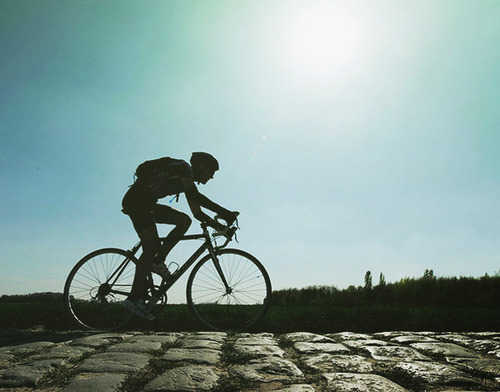
Paris-Roubaix Challenge – April 12th
This legendary cobblestone classic known for being tough, miserable, and (in the words of Dutch cyclist Theo de Rooij) "the most beautiful race in the world." Watch the best road cyclists cover the route known as the Hell of the North, which promises to leave them mud-splattered and exhausted. A great way to start the cycle viewing season and a classic for a reason.
Giro d'Italia May 9th – June 1st
The first Grand Tour of the year travels to Northern Ireland for the first time. From May 9th until the 11th, the Giro will be visiting the British Isles for three stages before returning back to Italy and the torturous mountain ascents this race is famous for. Watch for some legendary finishes and furious competition among the best teams in the world!
Kolo pro život / Mlada Boleslav Tour May 11th

Hoping for perfect conditions in 2014 again (Photo: Miloš Lubas, http://kolopro.cz/).
The first major event of the Czech cycling season is sure to be a great one. Kolo pro život (Czech only) is a Czech charity that organizes cycling races in all disciplines, from winter races, to road races, and even mountain biking competitions. If last year's race was any indication of the fun in store, this year should be messy and fantastic. Learn more about Kolo pro život in 2013' season.
Garmin Velothon Berlin – May 18th
2013 in Berlin looked like this.
This one-day race is part of the UCI Velothon Majors series of events. As part of the German Jedermanner (Everyman) tradition, the race is open to contestants of all skill levels and racing licenses. Over 13,000 participants will ride on two courses (one 60 km and the other 120 km) throughout the city of Berlin. Last year drew over 250,000 spectators – will you be the 250,001st this year?
Tour de France – July 5th
"Le Grand Boucle," to some or simply "The Tour" to others, the Tour de France is easily the most famous bicycle stage race in the world. Although there are many other exciting races, there is simply nothing else like the Tour’s atmosphere and pageantry. This year's spectacular Tour is said to feature a tour around the Arc de Triomphe in Paris, a first. Read more about the route of the Tour de France 2014.
The Transcontinental Race no. 2 – August 9th
Think you're tough? Well, this race is tougher. The second annual Transcontinental Race will leave Paris on August 9th before heading through Italy, Montenegro, and finishing in Istanbul, Turkey. How many riders will start? Or more importantly, how many will finish? You will just have to watch to find out.
Prudential RideLondon – August 9th, August 10th
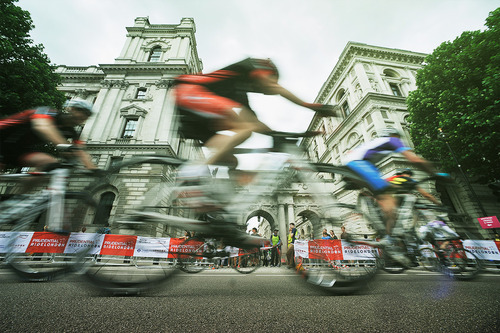
2013's Prudential Ride London-Surrey (Photosource).
This UK-based event is really 4 races under one banner. Watch over 150 of the world’s top ranked cyclists compete in the inaugural London-Surrey Classic, or ride the route yourself! The RideLondon Grand Prix will feature future youth cyclists competing on the route made famous in the 2012 London Olympics. And, if you're not in competition shape, you could even just do the 8-mile FreeCycle. Learn more about the event from our text about 2013's event.
Vuelta a España – August 23rd

2013: Stage 12, from Maella to Tarragona (Photosource).
The youngest of the Grand Tours, the Vuelta a España is known for its searing heat and difficult conditions. In the history of the Grand Tours, there has only been two riders who have won all three in a single year. Will there be a Triple Crown winner this year? Tune in to find out!
Behind the scenes of Vuelta a España 2013
UCI Road World Championships – September 21st-28th
One of the major last events of the cycling season, the UCI Road World Championships are known for being a showcase of young talent, in a variety of disciplines. This year's race takes place in Ponferrda, Spain. Come see the riders of tomorrow today! Learn more about the tradition of the UCI races here.
L'Eroica – October 5th
L'Eroica 2011 - A teaser, that captures the mood of the unique race very well.
The final event of our cycling year takes place in beautiful Tuscany, Italy. This is, perhaps, the most unique event of 2014. 5000 specially selected cyclists will be competing on non-modern bikes on Tuscany's historic crushed gravel tracks amid the splendors of the Italian countryside. Come celebrate two of the finer things in life – beautiful views and cycling.
#cycling race#cycling races#giro d'italia#Kolo pro život#Veloton Berlin#paris-roubaix#tour de france 2014#tour de france#transcontinental race#Prudential RideLondon-Surrey Classic#prudential RideLondon#Vuelta a España#uci#uci 2014#l'eroica#tour
0 notes
Text
Recumbent Bikes Or How to shatter the World Speed Record
The bicycle is more than a ride. It is a symbol. It is an icon of freedom. But, can it go as fast as a car?
The answer is: yes! Come check out some seriously fast recumbent bikes with us.

Does this already look fast to you? Prepare for more.
Lay Back and Enjoy the Ride
Recumbent bicycles have several advantages over "standard" bicycles, even racing ones! While high-tech racing bikes ridden by elite athletes manage speeds over 35 km/h in rare situations (such as Tour de France speed trials), recumbent bikes can regularly manage the same speed with the average rider.
How do they do it? By being well designed.
The ergonomic design means that a rider's weight is distributed more evenly throughout the bicycle. The reclining position of the recumbent also creates less drag, so the air resistance doesn't slow you down as much as on a normal bike.
A unique side-effect of the low slug design of recumbent bikes, is that they have better braking and are more responsive when they turn, due to the recumbent's unique design. Some recumbent bicycles are even fast enough to compete with cars on the road.
The Fastest Ever Bike
In September 2013, students of Delft and VU Universities in the Netherlands designed a new prototype recumbent bicycle, intending to set a new world record for the fastest human powered vehicle.
The Human Power Team, as they are known, are looking to build the fastest ever bicycle. Their most recent creation, named the VeloX3, made its debut at the World Human Powered Speed Challenge in Nevada, US. It measured a top speed of 133.78 km/h (83.13 mph), beating the previous top speed by 0.6 km/h
Blink and you might miss it. The VeloX3 is seriously fast.
The VeloX3 has an insane amount of speed thanks to its high-tech aerodynamic design and futuristic materials. The carbon fiber frame is covered with a light weight and wind-resistant shell, just like a Formula 1 race car.
This slick coating helps this special machine reduce its drag and air resistance even more, to a mere 1/10th of what would normally affect a rider. Sebastian Bowier, an employee of BBB Cycles and enthusiastic cyclist, was the final candidate chosen by VU Univeristy's Department of Human Movement Sciences to be the pilot of this futuristic bicycle.
VU University put the candidates through a tough, year-long training routine. VU University trainer Jelle de Jong explained, "By having the cyclists train for an average of 15 to 20 hours every week for a year, we were able to ensure they could perform at optimum levels of fitness." In the end both Bowier and his teammate Wil Baselmans were determined to be the best chances the Dutch team had at setting the record.
Trouble Perfecting the Design
However, the VeloX3 had the potential to go even faster. Human Power Team manager Wounter Lion pointed out that, "the computer simulations showed that the bike should have gone a lot faster than it did."
According to Lion, "when pedaling at high power inside the VeloX3, the outer shell turned out to deform slightly because of the force," an error, which added just enough drag to slow down performance.
Over the 6 days of the time trials, the Human Power Team was gradually able to alter the design enough fix the shell's flexing problem. As they were fixing that problem, however, unfavorable weather conditions developed – raising doubt as to the team’s ability to set a new record.
On the last day of the time trials, however, conditions miraculously improved, allowing Bowier a chance to make his claim for being the world's fastest cyclist.
The Big Moment
On the final day of the time trials, things were not looking good for the Human Power Team. The problems with the bending shell had already cost them several days of time trials, and strong winds had been coming and going. On the very last possible moment, the last ride of the day, Bowier and his team were able to finally overcome the most difficult obstacles.
Bowier's teammates helped give him a running start by guiding the VeloX3 down the road at a jog. For 8 long kilometres, Bowier pedaled at a furious tempo, but this was just the run-in. Then, as he hit the open road, it was all on Bowier to break the record. He sprinted all out for the final 200 meters in order to shatter the old record.
The video is a compilation of how the Human Power Team achieved the World Speed Record after three years of hard work.
Interested in Breaking Your Own Speed Record?
Although the VeloX3 is not available for sale, yet, a number of excellent recumbent bikes are on the market for those of you who wish to try this style of biking yourselves.
Many times, these consumer recumbent bikes are bought and sold through specialty bike stores, like the Hofrad in Berlin (read our story about the store).
Lie back and think of speed! Go set some of your own speed records today! But, you'd better get started soon if you want to beat Human Power Team – they're already working on the VeloX3's successor.
0 notes
Text
Reward Yourself and Your Bike with a Cycle Tool
Now that you've given everyone else their gifts, it's time for a present for yourself. Get a new best friend for your bike.

Get yourself the gift you REALLY wanted with ŠKODA's cycle tool (Czech eShop).
This handy device has everything you need to handle most road-side emergencies: 9 sizes of hex/Allen keys, slotted and cross screwdrivers, two wrench sizes, and three spoke wrenches.

The ŠKODA cycle tool (Czech eShop) is made of durable, high quality aluminum and hardened steel, so that it won't bend or break when you're in a tight spot. The cycle tool's compact size and light weight also makes it suitable for any sort of trip, even when weight or size are an issue.
And if you want to prepared for everything during your ride, we additionally recommend a simply clever multitool Leatherman from ŠKODA Germany.

Treat yourself and get your bike a new best friend. Be prepared for everything!
Interested?
Australia: Find a dealer
Czech Republic: Browse for cycling accessories in the eShop / Find a dealer
Benelux: Find a dealer / Browse for cycling accessories in the eShop
France: Find a dealer
Germany: Find a dealer / Browse for cycling accessories in the eShop
Italy: Find a dealer / Browse for cycling accessories in the eShop
Poland: Find a dealer
Spain: Find a dealer
UK: Find a dealer
0 notes
Text
Against The Odds: Alessandro Zanardi Keeps Winning Even Without Legs
Alessandro Zanardi was a successful racecar driver. When he lost his legs he did not stop competing but started a second career with his bare hands.

Zanardi racing with his handbike at Olympia 2012. (Photo: Alessandro Zanardi)
On September 15th 2001, Alessandro Zanardi was having the best day of a rough season. He had thought about quitting his competitive career a year before. And this year, the 2001 season of the CART Champ Car Series, hadn't been particularly good to him. Zanardi was struggling. But on that particular day, victory was finally in his grasp.
Zanardi was only 13 laps away from the end of the race on the EuroSpeedway Lausitzring in Germany, when he went in for a late pit stop. As the race leader, Zanardi knew that he should get back on the track as quickly as possible, so he wouldn't lose his position. He hurried back on to the track.
But then things went terribly wrong.
As Zanardi re-entered the track, mere seconds after leaving the pit, his car spun out of control. One of his rivals was able to narrowly avoid him, but another opponent wasn't so lucky. The Canadian driver Alex Tagliani had no chance to react to Zanardi's position at a speeds of 300 km/h. Tagliani's car hit Zanardi's monopost right behind the nose like a bomb and shattered the car's front section into pieces.
"You don't want to believe it"
Medical help rushed to the site of the accident within seconds. "You know what you see but you don't want to believe it," race doctor Terry Trammell recalled afterwards. Zanardi's legs were missing from knees down.
The Italian driver was bleeding heavily and only the immediate help of doctors and quick transportation to a specialized clinic would give him a chance at surviving. Zanardi lost most of his blood, and his heart stopped seven times before he got to the hospital.
Doctors had to operate him fifteen times to clean out his wounds. No one knew if he would live or die.
Ever Fall In Love With Something You Shouldn't?
Zanardi was born in 1966 in the village of Castel Maggiore, not far away from the famous Italian racetrack in Imola. As a child his parents didn't want him to be involved in car racing after his sister died in a car crash. However, as it usually happens, Zanardi took exactly the path his family wanted him to avoid. He started to drive a go-kart and fell in love with racing right away.
His passion for racing led him to Formula 1, but he never really found much success there. However, the Champ Car series in the USA fit him perfectly. The American audience loved his showmanship on and off the track – his daredevil maneuvers and passes, his fun victory celebrations, his stories, and his dry sense of humor.

Zanardi's first love: motorsport. A snapshot from the FIA World Touring Car Championship race in Istanbul in 2006. (Photo: Alessandro Zanardi)
Racing was His Life
When Zanardi first woke up from his medically-induced coma, the 34 year old racer thought he would have rather died.
Racing was his life. He loved racing more than anything, and in the blink of an eye, it was all gone. Suddenly he had no legs to control the car with, to work the pedals and clutch. But even though Zanardi was in the midst of the blackest despair, he saw his wife sitting next to his bed, and thought about his little son. He vowed right then and there to fight his way back to a "normal" life.
In order to become mobile again, Zanardi struggled through unbearable pain to walk on prosthetic legs – much earlier than anybody would have expected. He left the hospital within few weeks instead of the months people expected.
Zanardi wanted to race again. While some people might feel self-conscious or scared after a horrible accident, Zanardi showed no trace of fear. Furthermore, he didn't care that people looked at him like he was crazy. "They always did before the accident," he used to reply.
Two years later, he finished the 13 laps he missed after his crash on Lausitzring in a custom car, specially adapted for prosthetics. He won his first race after the horrific accident in year 2005. His life was returning; he had found success again. His life was "normal."
Finding a New Love
And just as life was beginning to become routine, Zanardi found a new challenge. It was love at first sight – Handcycling.
Handcycling is a relatively new twist on cycling. While traditional bicycles depend on a rider using their legs or prosthetics (like Jiří Ježek, who we profiled here) handcycles are powered by your arms and hands. They can be customized to adapt a wide variety of body shapes or injuries.

Handbikes come in various form. Above is a comfortable versions with hand-pedals. These also exist as less comfortable versions for racing. (Photo: cjm6394).
In the year 2007, Zanardi finished his first New York City marathon. Since then, Zanardi has been a fixture at the New York City marathon, until his times were considered to be "too fast" for the marathon. This year, he competed in a "slower" wheel-chair division.
Later Zanardi decided to pursue his Paralympic dream. Since his injury, Zanardi has gone on to become one of the best handcyclists in the world. He triumphed at the Paralympic Games and the UCI Para-Cycling Road World Championships, though he is still improving.
"For sure he is more popular now. He was a very good driver, but not a super top one. Now he's an example, a model and inspiration for everybody. His will, his strength, his victories show that if you have a dream, you can work it out," Italian journalist Marco Pastonesi from La Gazzetta dello Sport said.
You Got Me Walking
Zanardi's persistence helped him to pursue his dreams. He couldn't find good prosthetic legs, so he designed his own using his previous knowledge from motor sports – legs for walking, running, and racing.
"He's really powerful. He always said he was privileged compared to other people, because he was already famous and he knew many important people who could have helped him," Marco Pastonesi, the Italian journalist, said. Though Zanardi stayed humble and nice. "He looks friendly, easy, generous. Even if he's a star now, he keeps his time to train and to be with his family," Pastonesi added.
Zanardi's tenacity also helps people around the world as his story serves as a great example: "A virus left me in a wheelchair but you got me walking!!" stated one of the messages on Zanardi's twitter account. The Italian racer personally went to visit a young soccer player who lost his arm after a car accident and who thought he would never play on the highest level again. Thanks to Zanardi's encouragement, Julio Valentín González actually recently played in a top category match again.
Showman with a Great Background
Just like Zanardi fell in love with champ car racing, he quickly fell in love with himself to handcycling, devoting himself to the sport.
He finished in 4th place in the Handcycle Division of the 2007 New York City Marathon after just a few weeks of training. Two years later he made his debut at the Para-Cycling Road World Championships, and two years after that (in 2011) he won his first medal – a silver in the time trial. The same year, he also won the NYC Marathon in the Handcycle division.

In London 2012 Zanardi celebrates his three medals. (Photo: Alessandro Zanardi)
Zanardi's biggest success of his new career came last year, when he became one of the heroes of the 2012 Paralympic Games in London. He took first place in both the road race and the time trial in his category, H4, and second in the mixed team relay.
"I am speechless. For somebody like me that's something," Zanardi said jokingly in a TV interview.
The competitions took place at the motorsport track Brands Hatch. Zanardi celebrated his achievements sitting on the ground while holding his handcycle above his head.
"That picture doesn't show the stands full of roaring people. He has a great amount of supporters. He is an icon. When he enters a hotel lobby, people start running towards to him," Czech paracycling coach Viktor Zapletal said. "He is also a great showman, like alpine skier Alberto Tomba for example. A typical Italian – he comes to a victory ceremony in jeans and a t-shirt and he doesn’t care about the fine he is going to get for that."
Aiming for Rio 2016
There is also another reason why Zanardi is so successful. He has a great background and sponsors. "He's got money from insurance after his crash so he has his own mechanic," Zapletal mentioned.
But mainly it's his incredible willpower that turned Zanardi into a sports star. "He always said that the most powerful strength stays inside you, in your heart, in your mind," Italian journalist Marco Pastonesi said.

Victory feels awesome – no matter in which sport you are competing. (Photo: Alessandro Zanardi)
Zanardi seems to think that if you do things with passion, good results come as a consequence of that, no matter who you are or how old you are. Even in his late forties he won two races at the UCI Para Cycling World championship 2013. "World Champion! Both in the time trial and the road race. I said at 47 it won't last, but now let me enjoy it!!!" he wrote on twitter.
In 2013 he also wanted to defend is handcycling title at the New York City Marathon but he wasn't allowed to try because he was too fast on the handbike, where athletes operate the pedals with gears, brakes and a hand-crank. So he took up another challenge and decided to race on a wheelchair where athletes use solely their arms to propel the wheels.
"I'm terribly slow, though, today was the beginning of a new adventure," he wrote on Twitter after he tried his racing wheelchair for the first time. That was two months before he entered the race in New York, where he finished on the 35th place in time of 2:30:42. He didn't ride a longer distance than half marathon before the race. He also pointed out that his arms are short which is an additional disadvantage. He tried to find a way around that with special and smaller wheels on his wheelchair. Once again he proved that he is able to fight against all odds.
"His next goal are the Paralympic Games in Rio de Janeiro, but year 2016 is so far away, that he tries to keep his mind free for some time and then he'll see and decide," Pastonesi said.
But knowing Zanardi, he'll never back down from a challenge.
1 note
·
View note
Text
Adventurous Women on Bicycles
Katrin Karkhof, Juliana Buhring and Hana Ebertová – three women who are pushing themselves to do more crazy and interesting things than other people even dream about. Follow their tire tracks.

Hana Ebertová during one of her adventurous trips.
#1 Katrin Karkhof: Flying Down a Hill
By day, Katrin Karkhof has a normal job. She works as a physiotherapist in a school for children with special needs.
After her shift is done, however, she is ready for an adventure. She puts on a hard-wearing helmet, she covers her spine with a protective pad, takes her bike, and goes for a training session on a dirt downhill trail full of obstacles, stones and jumps. It doesn't matter that the weather is harsh and that it's getting dark early, she still goes out on her bike with a lamp on her helmet – for a ride most people would avoid even during a bright and sunny day.
"I took up downhill the typical way most women do: My ex-boyfriend rode downhill and I was immediately fascinated by the sport. I've always enjoyed doing sports and I had to try it," 31-year-old German rider said.

Katrin Karkhof, prepared for her next race.
Karkhof's big dream is to get a start at the UCI Mountain Bike and Trails World Championship in Andorra in 2015. "I raced my first World Cup there and I love that track."
In order to do this, she is taking her training seriously. This winter, for example, she is spending time in an Olympic training center in Stuttgart, in addition to her normal training. But she can't afford to dedicate her time to training only.
"A full-time job is necessary, because I still don't earn money with the sport. My working hours are not too long and I also have school holidays, so I am still able to find time to train," she added.
Girls Don't Play With Bikes
Unlike on the road (see also "Women in Cycling: A constant struggle"), cycling opportunities in mountain biking for men and women are equal – both genders have the same races and compete on the same routes. They also get the same prize money during the high level events like the World Championship or the World Cup. "Women are role models for other women and men also like to take a look. We may get more attention."
"I think that in mountain bike racing there are not really disadvantages. Each race always has a class for women. For us women there are as many races as there are for men. Unfortunately, the class for women is usually very small, but female racing is growing every day."
Women have fewer biological advantages in the sport than men. "Our advantages are definitely not physical, which is required to a great extent in this discipline," Karkhof said. Men are naturally stronger and more muscular, which helps them to deal with hazardous trails.
"Only a few girls start really early with cycling. In my experience, we girls play less on the roads with our bikes and we also don't learn to control the bike as naturally as little boys," Karkhof added with smile.
Exotic?
Karkhof (whose blog you can follow here), is definitely not the only rider who has a regular job outside of a sport with a huge potential of injury.
"Most women who ride races need to work normally. The only advantage we may have is that we are still seen as exotic in this sport, and this may sometimes help searching for sponsors", Karkhof, said. She recently found a new team and sponsor for year 2014, Pivot Cycles.
#2 Juliana Buhring: Cycling Around the World
It took some time for Juliana Buhring to get some attention for the bold journey she went through. Last year she became the first woman to set the world record for circumnavigation of the world by bicycle.
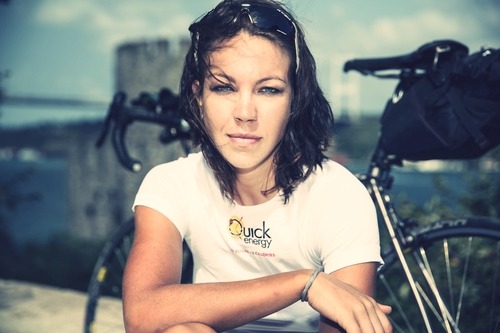
Juliana Buhring.
She had no sponsors in the beginning of her trip, which took her 152 days, more than 18 000 miles (around 29 000 km) on the bike and 24 900 miles (40 000 km) altogether. She took this grueling voyage without years-long training, without sponsors or a team to back her up.
"In fact, there was nothing to qualify me for such a huge undertaking. Nothing but willpower and the determination to finish no matter what. I was out to prove everything is possible. That we can do things that are greater than ourselves," said Buhring, who works as a language teacher.
"I believe that many people put off making their dreams a reality, waiting for the right time or the right conditions. There is no such thing. The right time is now. 'One day' is just another way of saying 'never'."
Through Wind, Spills, and Illness
She started her trip in Naples in Italy and went through four continents. She suffered through sickness, serious falls, flat tires, gusting winds and various animal attacks. The closer she was to getting home, the harder it became to pedal in cold weather.
"More often than not, I wondered whether I had what it took to see this endeavor through to the end. I guess I have my answer. And I guess too, I’ve proven my point: we can do things that are greater than ourselves. You don’t need to be rich, famous, talented, or anybody at all to do something extraordinary. The sky is NOT the limit. There are no limits, only social, cultural, religious and self-imposed limitations. If we can break through those, I believe humans are capable of going much further both as individuals and as a species," she continued in her blog.
First the World, then Europe
Buhring has a huge personal experience with the mentioned limitations. She was raised in a religious group called Children of God, which was very controversial in the 1970’s and 80's. She broke free from there and wrote a book about her experiences. With her challenging journey she helped to raise money for a charity supporting kids in similar situations.
But she still feels that people are often hampered by prejudice. She fights for children’s rights, frequently discusses gender inequality, and that women are often not recognized for what they are capable of doing – even if they are able to reach the same achievements as men.

On the road again: Juliana Buhring.
She is one of those women who often achieve impossible tasks – in 2013 she was the sole female rider to compete in an unsupported race through Europe from London to Istanbul. And this was for sure not her last achievement.
#3 Hana Ebertová: Cycling Without Sleep
Going from one adventurous voyage to another is a great way to get the adrenaline rushing through your body again.
Czech endurance racer Hana Ebertová kept competing in various ultramarathon races (extremely long-distance endurance races) for many, many years. She’s the world record holder of the longest distance ridden in 24 hours, and one of the toughest human beings ever. But a few years ago, she noticed that her body couldn't go take the exhausting competitions any more.
Her mind got tired of all the pressure. Furthermore, the members of her support team needed a break. So Ebertová thought she had finished her racing career. She had surgeries to repair problems with her elbow, eyes and knees.
"I have missed the path leading to something you have to work for really, really hard. I didn't miss the race as much as the everyday training. I had been still riding a bike but when I went for some tests the results came that I was a training wreck comparing to my condition before. I was still able to ride 150 kilometers in one day but then I needed three days of rest. I missed a goal, life didn't have much sense," the 43-year old Ebertová said.
But her riding days weren't over. Not yet.
Always on the Lookout for New Challenges
Her psyche got beat up by constant knee problems, which bothered her in regular life, every step was painful for her for about a year and half. According to her doctor, her knee was all structurally fine, but it was still painful. "Then I started to train again and it got better," she said.
She kept following ultramarathon races as a member of a support team but she needed her own challenge. So she searched for the highest elevated mountain pass she could ride through on her bike and she found it in India. Ebertová told herself: "I went through various extremes so I will find another one. I haven't been in the highest possible altitude on my bike yet. There are some higher motor-accessible passes in Tibet but the Chinese army doesn't allow people to go there. So my first reason to go to India wasn't the country itself but it was the highest pass."
She actually got a little sweaty when she realized where the pass Khardung La is situated. "And I was right about that, I was sick for three weeks in India, even though I got all the vaccination possible," Ebertová recalled.
A Tourist in India
She went to India just two months after her knee surgery, but she had more troubles walking around than riding her bike. "You can't ride fast in such a high altitude because you would suffocate. So it was not a problem to ride the bike, you are pretty much using it to move from one point to another," Ebertová explained.
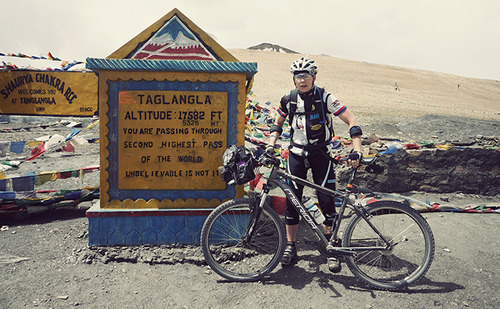
Hana Ebertová at the second highest pass of the world.
This trip changed some of her views. "I consider myself to be tough but this was a touching experience," Ebertová said. She will particularly remember one picture till the end of her days. "Indian people really take care of the tourists because they bring money. So when we stayed in a tent city, they used to bring cartons of milk there so we could have our coffees with milk in the morning. One of the Indian women used to heat the milk up in a pot. Then a little child came there and it was collecting the rest of the milk with its fingers from the pot. You could tell that it was the only way this kid could get some milk," Ebertová said.
Adventure, Renewed!
Now Ebertová is again suffering through the days of painful training, which lead up to a demanding race. Once again, she will push her body over the limits while riding her bike for about 60 hours without much sleep. But it was not her idea, originally. It was Ebertová’s ophthalmologist who pushed her to face this challenge again.
"I am happy for the new challenge. I was in a weird state of mind and this was an impulse. Even if the race didn't go well in May it gave me again the desire to train", Ebertová said.
She has already put her support team together, including some former members are willing to give up some of their vacation days for her once again. Most of her sponsors stood by her – her employer is on the list of her supporters too. So after her workday in a building material firm, Hana Ebertová sits on a bike and pedals towards another cycling adventure.
Ebertová is now getting ready for 2014's race around Slovenia, where she had finished third, second and first in past years. The adrenaline is flowing once again.
#Katrin Karkhof#Juliana Buhring#Hana Ebertová#women in cycling#women's cycling#downhill#transcontinental race#people
3 notes
·
View notes
Text
Safety First! How to Protect Yourself and Your Bike
Biking can be dangerous. Don't ride in fear, but follow four ways to protect yourself AND your bike!

This did not go as planned. (Photo: VeloBusDriver)
1. Get a good bike lock!
The first rule of buying a bike is: buy a bike lock too. Bikes are easily stolen and resold, so you need to protect your investment. A thief just needs a few seconds to hop on your bike while your back is turned and, the next thing you know, the love of your life (your bike) is now someone else's.
The industry standard is the U-Lock, a U-shaped padlock of metal with a detachable and lockable bar of metal, which goes across the ends of the U. Many of these locks are made by brands like Kryptonite or OnGuard. Newer bike lock models like Bitlock have some exciting new features like keyless unlocking via your smartphone and lock tracking (great for those of us with bad memories.)
Another option is the classic chain with a padlock option (such as OnGuard). While these are easier to use than U-locks, can lock to almost any post or fence (no matter how wide or far apart), and can cover more parts of the bike, they are also heavier.
Either way, it is important to make sure that your method of locking the bike includes the frame and at least one tire (preferably both). This discourages a potential thief from just removing the wheel and running off.
2. Turn On the Lights
The winter months mean that darkness falls quickly and earlier than in other prime cycling months.
While biking at night can be a peaceful, relaxing way to spend your evening or your commute home, it can also mean that you're more at risk. So, bike lights (and lighted clothing) are necessary for any of you who are doing nocturnal biking.
If you're in the market for something small, simple and not too heavy, you should definitely look into bike lights like the BlindeKUH or KNOG's Frog Lights, which wrap around handlebars and seatposts quickly. No modifications or tools are needed.
However, if you need more visibility (such as you live in a rural area without streetlights), you should look into reflective vests and lights that attach to your clothing. Dargelos in America is producing a really well-designed and highly reflective vest. But any reflective vest will work to raise your visibility to others on the road.

Dargelos' highly refletive vest. (Photo: Dargelos)
3. Protect your tires!
Few things are worse than making great time, only to be stopped by a flat tire – especially during rain or in the night. Although tire linings add a few ounces to your wheels, they help protect against punctures from thorns and glass (as well as the sharp parts of your tire rim) as you bounce along the cobbles or your favorite single-track trail.
High quality tire linings like Mr. Tuffy or Slime will only add a little bit of weight and offer you kilometers of protection. They are cheap and relatively easy to install at home. You simply just put them between your rims and the inner-tube of your tire.
Some people feel that tire liners are over-rated and over-priced. For the budget-minded (or the skeptical), other riders prefer chalking the tire rim to decrease friction and allow the tire to sit better within the rim itself.
4. Protect Your Components!
Those custom seats and quick-release wheels not only help you maintaining your bike quick and easy, they're also targets for thieves who want to sell your expensive components on the black market.
A great way to stop thieves dead in their tracks is to use skewer locks like the C3N system from sphyke, a Berlin based company, or the Pitlock. These help cut down on theft by making it harder to remove things like your pedals and seat.

The C3N system, replacing a quick-release. (Photo: sphyke)
The C3N system replaces the hex nuts in your bike with a new combination lock and modified hex nut. This means that you can only access the hex-nut to remove the component IF you know the combination. The Pitlock does something similar, but requires an actual, physical key to unlock your parts.
Another similar trick that can help reduce the likelihood of theft (or prevent it outright) is to replace the screws in your bike with less-common screw types of the same size. The typical bike thief only carries the most common tools for the job – simply switching out the screws can make a world of difference.
No more getting off of work to find some jerk stole your seat!
1 note
·
View note
Photo

The Tour de France 2013 in Numbers
4 notes
·
View notes
Text
From Ireland With Love - Bike Polo Makes a Comeback
Polo was once called the sport of kings.
It was used to train cavalry officers and was the favorite sport of many noblemen. But today, a hipper polo is being played – bike polo!

(Photo: NealeA)
New Game…
Polo has long been a game of kings and dukes, of the wealthy and powerful who have the space to keep horses and the money and time to learn the game. It featured teams of mounted horsemen using mallets and hammers to knock a ball into a goal.
Bike polo takes that idea – knocking a ball into a net with a long-stemmed hammer while riding something – and simply replaces the largest, smelliest component: the horse. Instead, players ride bicycles around a court, wielding their mallets in one hand while steering with the other, as they try to knock a ball into a net

This is what bike polo looks like today: women and men on fashionable cycles. (Photo: NealeA)
…Long Tradition
But where does bike polo come from? Surprisingly, it has very humble origins. In 1891, Richard J. Mecredy (a cycling enthusiast in County Wicklow, Ireland) first suggested that polo on bicycles might be a way for common people to participate the noble sport.
Mecredy was a former competitive cycle racer in England, and member of the Dublin Univeristy Cycle Club. After his retirement from competitive cycling, Mecredy became one of the biggest supporters of cycling in Ireland by publishing of his own cycling newspaper, The Irish Cyclist.
As an influential member of the cycling community, Mecredy organized the first bike polo game, which saw members of the Rathclaren Rovers and Ohne Hast cycle clubs play by an early set of his rules.
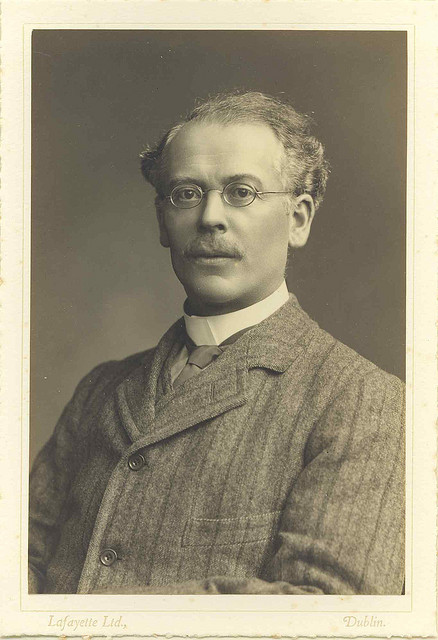
Richard J. Mecredy. (Photo: Robin Hutton)
Later that month, another Irish cycling magazine Cycling published Mecredy's first set of rules for Bike Polo, outlining the Irishman's vision for a game that combined the elegance of polo with exciting new technology – the bicycle. Other cycling newspapers were delighted with the sport and published their own sets of rules.
The sport was an unlikely success. It took off in Great Britain and Ireland; France and the US developed their own leagues and rules. In 1908, cycle polo became an Olympic sport, but the outbreak of World War I put an end to bike polo's Olympic dreams.
Two Flavors of Bike Polo
Traditionally, bike polo was played much like its horse-drawn ancestor – on grass. In the traditional variety of the sport, teams of 6 (or 7 if you're playing by French rules) compete on a grass court. Players use a wooden mallet to hit a ball into a goal using a standard wooden polo mallet.

Some like it protected. Player's shins and knees often get bruised. (Photo: Jonny Hunter)
Matches are divided into 4 periods of 7.5 minutes (30 minutes total). The team who scores the most goals in the end of the match is declared the winner. Fouls (high sticking, blocking, checking, and so on) are punished based on where they occurred and how deliberate they were. Fouls committed close to the goal result in free goals to the opponent; less serious fouls mean that the opponent gets a 25 or 50 meter free hit.
Severe penalties for deliberate and dangerous fouls can mean that the offender will be given yellow and red cards like in football.
Although the game is new, it maintains a lot of older (horse-based) polo rules and traditions. Match periods are called chukkars, tie games are settled with by an overtime period with extra-wide goals, and teams are handicapped (where the better team gives their opponents free goals to start the game).
But Not Everyone Likes Tradition
In the late 1990's a Seattle cyclists bored with their coffee invented the "hardcourt" style. This style features more emphasis on creativity and speed, and ignores or completely revises many of the older, more traditional rules.

Discs between the spokes are meant to protect against the hammers getting stuck within the wheel and causing a crash. (Photo: Lewis Kelly)
The "hardcourt" version of bike polo has been gaining popularity in recent years especially in urban areas, where there are many unused basketball courts, skating rinks, parking lots, and tennis courts in the warm months.
Unlike "traditional" bike polo, there are much fewer regulations that apply to athletes or equipment. Bikes are frequently modified messenger’s bikes or single-speeds. The mallet is also DIY, unique to each player and modified to suit his or her playing style. The pace of the game is faster, more attitude driven. If traditional polo is the sport of kings, hardcourt is the game of tattooed bike messengers.
Teams in hardcourt compete for either set periods (usually 15 or 20 minutes) to score the most points, or race to see who can score a set number of goals the fastest. And unlike traditional cycle polo, which uses stakes in the ground to mark the goals, hardcourt bike polo uses modified hockey nets.
Where Will the Future Take It?
Although both traditional and hardcourt bike polo are niche sports today, the numbers of players and fans are steadily growing.
Matt Horwood, a prominent member of London’s cycling community, expressed his hope that the sport will be making a return to the Olympics sometime soon in an interview with the BBC last year.

Everybody needs a break. (Photo: Derek Bridges)
"We need more structure around the bigger tournaments and more awareness so that there can be a training scheme long term, so younger kids can get involved and carry it on in the future to the point where it could be taken as an Olympic sport maybe 10, 15 years from now," said Horwood.Perhaps someday soon, we will all be rooting for our favorite local bike polo teams!
0 notes
Text
Warm Clothes for Cold Cycling
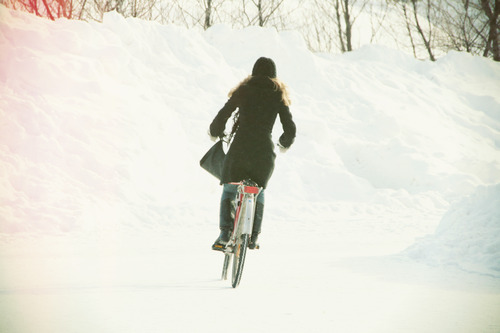
Riding in the cold clear air feels great – as long as the ground is not too slippery. (Photo: Pete)
Outside, the temperature is falling.
But cycling in the winter doesn't have to be something to be afraid of. Here are a few tips for staying warm in even the coldest blizzard!
Keep Your Grip
Nothing is more miserable when cycling than cold hands.
Cold and numb hands are not just uncomfortable, they will also affect how well you handle and steer – something that can create problems on a wet or snowy road until you warm up enough.
But you can't just wear any old gloves. Sweat and snow will soak wool mittens and gloves faster than you can say "Frosty the Snowman". A good choice is a pair of gloves that are waterproof, which will help keep your hands dry and warm during your ride.
Be careful that your gloves aren't too bulky – you want to be able to feel your brakes and shifters even with your gloves on. And though they look strange, lobster shell gloves (mittens which force your fingers into the best position for cycling) are great choices for colder weather.

It's your choice: normal gloves, or lobsters? Try, what works best for you. (Photo: Jeff Moser)
Layers are the Key
As parents often tell their little children – wear your layers!
Insulation works by trapping pockets of warm air close to the skin. The better your insulation is, the warmer you'll stay and the less heat you'll lose during our ride. Good choices are thermal underwear (long underwear) or underclothes made from merino wool. The newest merino clothing has lost that “distinctive” odor that constantly affected other earlier products.
Most importantly, you should wear underclothing that "breathes", or moves sweat and moisture away from your skin while keeping the warmth inside.
Over the Top!
For really cold days, you might want to consider a something nice and warm over the top of your usual cycling clothes. Normal outdoor and winter jackets (ski jackets, parkas, and so on) are often too bulky for riders, or too insulating for the heavy cardio that cycling provides.
A good sweatshirt, softshell, or fleece will help keep the wind away and add another layer of insulation for cold days when there isn't much snow or precipitation.
If it's raining or snowing, a waterproof jacket might be a better option, if it is too wet for a softshell jacket. Under waterproof jackets you will sweat even more, so it is a good choice, to pick one of those with zippers under your arms to provide a minimum of air circulation.
A Hat Makes the Cyclist
Another easily overlooked way to keep warm is to keep your head covered. Scientists estimate that we lose around 10% to 20% of our body heat through our scalps. Hats will help you keep the heat in, as well as prevent the cold air from giving your sweaty brow a chill.
Some cyclists prefer to wear a normal cycling cap underneath their helmets, others prefer hats that cover the ears. A buff might be an option if you are undecided – it can be worn both ways. Whichever you choose is up to you, but even the thinnest cap will help you feel warmer on a cold day.
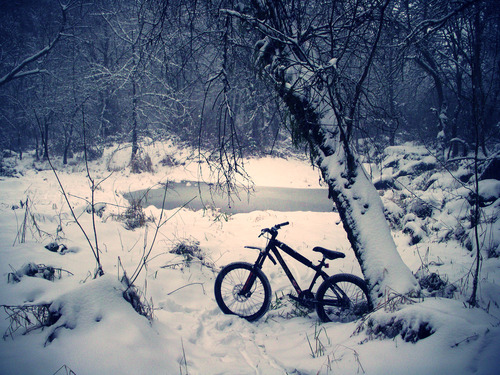
Snow can simply mean: More fun! (Photo: The AutoMotovated Cyclist)
On Your Feet
Perhaps the most overlooked part of your cold-weather wardrobe is the socks. After your head, you lose more heat from your fingers and toes than anywhere else on your body. And since our bodies don't circulate blood as efficiently to our feet as they do our hands, they're consistently colder than your hands or your head.
A good pair of neoprene or merino wool socks will do wonders to keep your feet nice and toasty all ride long. And if your shoes are big enough, a cheap and simple solution is just to wear two pairs of socks at once!
Don't Overdo It!
It's easy to forget this last simple rule: don't over do it.
It may be cold when you start riding, but after the first few minutes your body will warm up. Wearing too many clothes will make you sweat, leaving you feeling like a boiled sausage. Try to wear clothes that are easy to open, have possible openings everywhere or bring a little bag backpack, where you can put what you don't wear right now.
So, don't sit like a lump of lead on the couch this winter – with these simple tips you can cycle all year long!
0 notes
Text
Winter is Here – How to Keep on Training
The roads are icy. Snow and slush are everywhere, turning your normal commute into an hour-long slog through freezing, wintery hell. Sure the fire's warm inside, but outside, the weather is miserable.
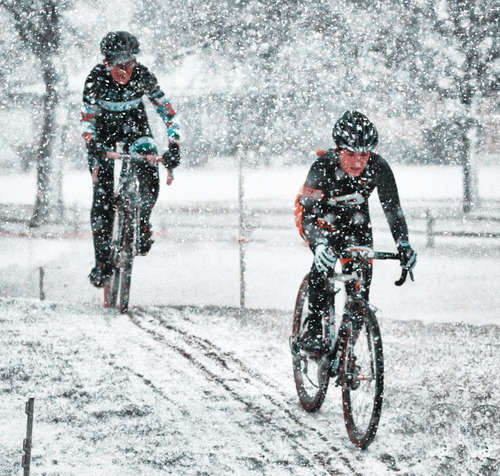
A well prepared winter ride is fun. (Photo: Don Burkett)
However, if you prefer warmer rides, or live somewhere were snow and ice make biking outside unusually dangerous, here’s some indoor cycling tips to keep you in shape through those long winter months.
Get a Bike Trainer
One of your options for winter workouts on your bike is using a trainer to ride at home (or anywhere else for that matter).
A bike trainer is a piece of equipment that lets you ride your own bicycle in place, outdoors or indoors, usually though a combination of rollers and supports (though a variety of models exist). The basic models are available for 25 Euros. On a bot more advanced level, most trainers have adjustable resistance, which helps duplicate the feel of climbs and descents. The models start around 60 Euros. Some more expensive trainers even come equipped with a fan to duplicate the feel of wind in your face and, more importantly, drag.
While you won't get a chance to practice cornering and handling on a trainer (since you don't move), trainers offer a good opportunity to maintain your core and cardio during the long winter months.

Example for a bike trainer. (Photo: Jason Spaceman)
Train Smarter, Not Harder
If you have a bike trainer, you may be tempted to just limit your training to hours-long sessions of cardio.
While static workouts like this are good ideas for rest days (days after especially tough workouts) and maintenance days (for injured cyclists who are cleared for light workouts), they are not great for increasing one's performance.
The downside of long, unchanging workouts like these is that you end up riding junk miles, which do little for your training (if you're a road racer or mountain biker) beyond burning calories and building endurance.
Sure, you might still look good at the start of the season, but if you just bike at the same tempo for hours on end, you will find that your performance will suffer at the beginning of the next season – we simply don't just bike one speed for hours on end, unless of course, we're competing in keirin.
Interval Training!
One way to get around this problem, is of course, good old-fashioned interval training. Interval training works by pushing your body to its maximum limit, in terms of heart rate and oxygen consumption. You then take a small break at a lower intensity, to recover, and then return to your max again. This continues until you hit a set number of intervals, much like weight training "reps".
The idea behind the training are gains in muscle growth and endurance. These are mostly made when your body approaches the limits of your body’s ability to breathe in and distribute oxygen. By constantly putting your body near its limits over the course of a workout session, you increase several things: lung capacity, muscle mass, and cardiovascular efficiency. The last thing is how effectively your body distributes the oxygen you just breathed through your blood.

Bike trainers are also used by professional cyclists when warming up - here before a stage of the Tour de France 2013.
Short-term rests allow your body to "reset" briefly before you start another interval rep, since it is impossible to push yourself at such high levels for an entire workout.
Although many of us dread doing interval training, it remains an extremely effective training tool. This method provides us with great returns in terms of power and speed and you can do it easily on a trainer or stationary bike.
Intervals At Work
Intervals work best after your body has already been properly warmed up, so you don't hurt your muscles and can go as hard as you can.
For building speed, most trainers generally recommend a combination of longer (around one minute) fast intervals in light gear at your fastest cadence followed by rests. After 4 or 5 sets of this, you should take a longer rest period of 5-10 minutes, pedaling at a normal speed. Then ramp up your intensity to maximum for 30 second bursts followed by 30 seconds of rest; repeat 10-12 times, then cool down.
Building power for climbs works in a similar manner with rests and sprints. The difference is, you need to focus less on short bursts and more on sustained sprints for a minute or more.
One of the great benefits of interval training is, that you will also build up some serious cardio, since high intensity workouts get your cardiovascular system in race shape very quickly. Plenty of excellent interval routines are available, so if you get bored of one, you can always create your own or use another.
Stationary Biking?
But what if you don't have money or space for a bike trainer? Are there other options for your winter training?
Although some purists will scoff at the idea of using stationary indoor bikes as training, they are commonly available at most gyms and fitness clubs. These machines offer some surprisingly useful amenities for the competitive cyclist. A simple model is already available for around 80 Euros, but if you want to use it for more than one season or have special requirements you should prepare yourself to spend 300 Euros.

You can see a stationary bike on the right. (Photo: Porto Bay Hotels & Resorts)
Most stationary bikes come with heart monitors and other ways of measuring exactly how hard you're working out and for exactly how long. They offer variable resistances for simulating hill climbs, descents, wind resistance and so on.
Additionally, modern ones are fully programmable, which lets you program those killer intervals in so you aren't tempted to cheat or opt out.
No Substitute for the Real Thing
Finally, if the weather is nice and the roads are ice and snow-free, you might want to consider doing some outdoor training. There's no substitute for having the road underneath your tires and fresh air around you.
If you do go outside, don't forget to bundle up and stay warm!
#Cycling in winter#cycling#winter training#stationary bike#hometrainer#bike trainer#interval training
2 notes
·
View notes
Text
Warm Clothing Ideas
You need a warm sweater. Do you prefer yours in white or black?

Let's look at both pieces and their features in detail:
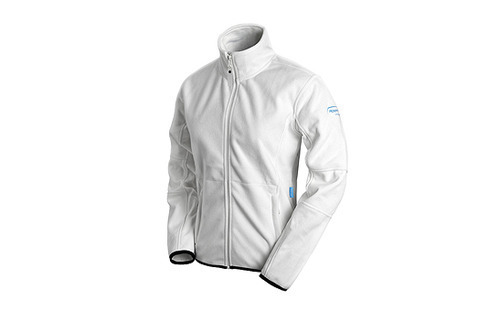
The white Roomster fleece features all the warmth and comfort you could expect from a ŠKODA auto, in clothing form. The two-ply polyester fabric is lightweight, easy to clean, and durable, while the zipper makes getting into your fleece a breeze. In the Czech e-shop this sweater is on sale.

The classy, minimalist black ŠKODA sweatshirt embodies the clean and sleek modern style. It is made of 100% all-natural cotton, which means it's more breathable and comfortable than synthetic fibers. Cotton is also naturally hypoallergenic and resistant to dust mites, which is great news for people with sensitive skin or allergies.
No matter if you ride slowly, take a large break in between your rides, or just want to be comfortable after a long ride in the cold, both clothing options will keep you warm and cozy and ensure your body's health this winter. Ride on!
Interested?
Australia: Find a dealer
Czech Republic: Browse for cycling accessories in the eShop / Find a dealer
Benelux: Find a dealer / Browse for cycling accessories in the eShop
France: Find a dealer
Germany: Find a dealer / Browse for cycling accessories in the eShop
Italy: Find a dealer / Browse for cycling accessories in the eShop
Poland: Find a dealer
Spain: Find a dealer
UK: Find a dealer
0 notes